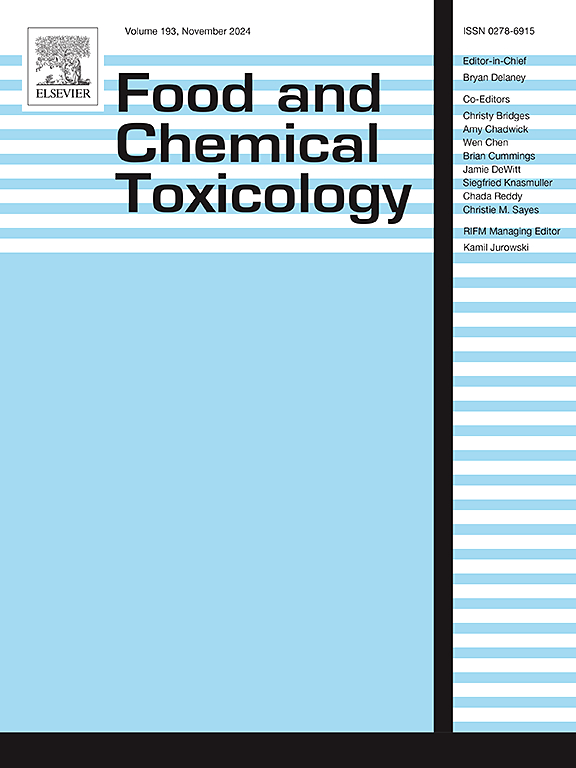A proposed screening strategy for evaluating the genotoxicity potential of botanicals and botanical extracts
IF 3.9
3区 医学
Q2 FOOD SCIENCE & TECHNOLOGY
引用次数: 0
Abstract
Botanicals have long been used to promote health and treat diseases, but the safety of many currently marketed botanicals has not been adequately evaluated. Given the chemical complexity of botanicals, which often contain numerous unknown constituents, and their widespread use, comprehensive toxicity assessments are needed. The Botanical Safety Consortium was established to address this challenge. This international group of experts in toxicology, chemistry, bioinformatics, and pharmacognosy is developing a toolkit of assays to generate reliable toxicological profiles for botanicals. Genotoxicity assessment is especially critical, because, unlike other toxicities, genotoxicity is not adequately identified by adverse event and history-of-use reports, and genotoxicity is directly linked to health consequences such as cancer and birth defects. The Consortium's Genotoxicity Technical Working Group is exploring a genotoxicity testing strategy based on the use of in silico modeling and the bacterial reverse mutation and in vitro micronucleus assays and including several options for additional tests to further characterize genotoxicity and mode of action when indicated. The effectiveness of this testing strategy is being evaluated using 13 well-characterized botanicals with existing toxicological data as case studies. A brief overview of each of these 13 botanicals is provided. The final strategy for developing comprehensive genotoxicity profiles of botanicals will incorporate published genotoxicity data, chemical composition information, in silico and in vitro test data, and human exposure data, reducing the need for animal testing.
求助全文
约1分钟内获得全文
求助全文
来源期刊

Food and Chemical Toxicology
工程技术-毒理学
CiteScore
10.90
自引率
4.70%
发文量
651
审稿时长
31 days
期刊介绍:
Food and Chemical Toxicology (FCT), an internationally renowned journal, that publishes original research articles and reviews on toxic effects, in animals and humans, of natural or synthetic chemicals occurring in the human environment with particular emphasis on food, drugs, and chemicals, including agricultural and industrial safety, and consumer product safety. Areas such as safety evaluation of novel foods and ingredients, biotechnologically-derived products, and nanomaterials are included in the scope of the journal. FCT also encourages submission of papers on inter-relationships between nutrition and toxicology and on in vitro techniques, particularly those fostering the 3 Rs.
The principal aim of the journal is to publish high impact, scholarly work and to serve as a multidisciplinary forum for research in toxicology. Papers submitted will be judged on the basis of scientific originality and contribution to the field, quality and subject matter. Studies should address at least one of the following:
-Adverse physiological/biochemical, or pathological changes induced by specific defined substances
-New techniques for assessing potential toxicity, including molecular biology
-Mechanisms underlying toxic phenomena
-Toxicological examinations of specific chemicals or consumer products, both those showing adverse effects and those demonstrating safety, that meet current standards of scientific acceptability.
Authors must clearly and briefly identify what novel toxic effect (s) or toxic mechanism (s) of the chemical are being reported and what their significance is in the abstract. Furthermore, sufficient doses should be included in order to provide information on NOAEL/LOAEL values.
 求助内容:
求助内容: 应助结果提醒方式:
应助结果提醒方式:


